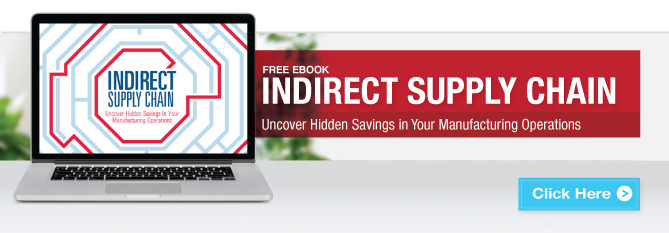In a 2016 survey conducted by MHI and Deloitte, a logistics industry group, 35% of respondents said they’d already adopted robotics to maximize their supply chain optimization. The same report suggested that in 10 years that number will rise to 74%. But the question still remains: is the rise of robotics within the manufacturing supply chain a good or bad thing?
We’ve answered some your most pressing questions about supply chain robotics to determine if 10 years from now they will be Rosie the Robot good or Terminator bad.
1. Will "Hiring" Robots Lead to Employee Layoffs?
Not at all. Certainly, public perception of robotic replacement of human workers will be something that companies will have to grapple with as we move into greater automation. Many robotic technologies though will only enhance what your workers can currently do, rather than replace them all together.
Yes, there are jobs that robots can do better than humans. Some examples include tasks like precision cutting or sorting through huge amounts of data. However, there are many ways robots will only help humans perform their jobs better. For example, we’re already seeing how barcode technology and scanning is helping workers become more accurate. Additionally, we predict a rise in new jobs for skilled workers, including staff who’ve been retrained to maintain these new technologies and watch for errors on the supply chain.
2. Can Robots and Workers be on the Floor at the Same Time?
In the past, human/robot injuries used to be one of the biggest concerns with robotic supply chain optimization. However, the problem has already been fixed.
Developers have helped robots easily get around the floor without disrupting human movement. No longer do human workers and robots have to be barricaded with cages. This removal of cages lets companies restructure work flows more efficiently based on increased or decreased demand. While there still needs to be room between human workers and robots, new technologies already allow for the installation of robots into areas where they couldn’t be before, adding to their increasing effectiveness.
3. Will Robots Cost More Money Than They're Worth?
Robotic technologies are often worth their price because they are able to work such long hours without burnout. For example, a Baxter robot (which costs around $25,000) sorted plastics continuously for over 2000 hours. Think about how much that simple task would cost if a person getting paid $9 an hour performed it. Other ways that robotics could save you money and increase efficiency over the next 10 years is in the range of automated delivery trucks that could haul long distances and drones to deliver packages.
Robotics will likely be a part of your plan for supply chain optimization 10 years from now – and really, that’s a good thing. Overall, robotics promise to deliver a safer, more efficient, and reliable supply chain of the future. The race is on!

About Michael Wilson
Michael Wilson is AFFLINK'S Vice President of Marketing and Communications. He has been with the organization since 2005 and provides strategic leadership for the entire supply chain team. In his free time, Michael enjoys working with the Wounded Warrior Project, fishing, and improving his cooking skills.






